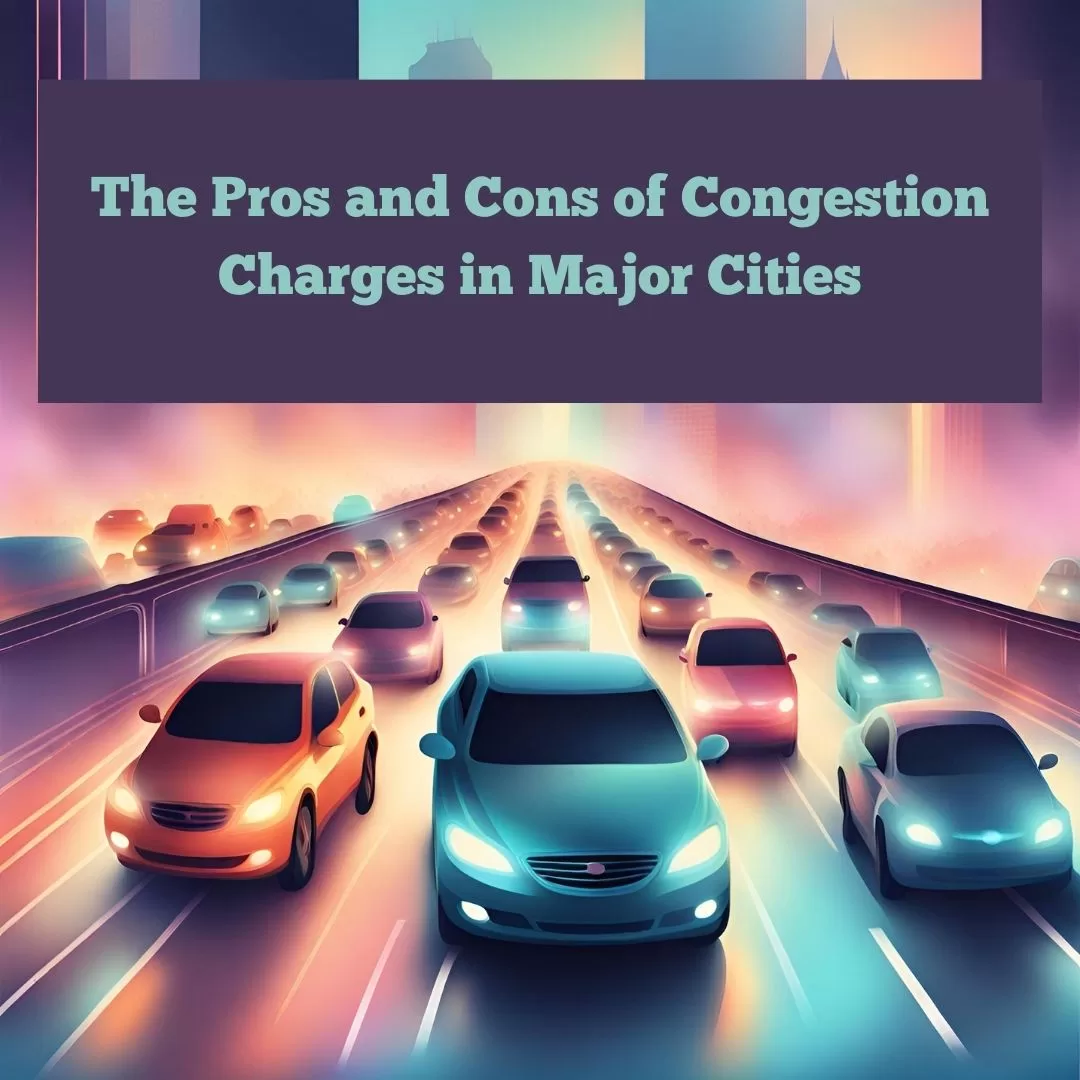As cities grapple with mounting traffic congestion, air pollution, and infrastructure challenges, policymakers are exploring innovative solutions to manage urban mobility and enhance the livability of urban environments. One such approach that has garnered increasing attention is congestion pricing—a mechanism designed to reduce traffic congestion and generate revenue by charging drivers for using congested roadways during peak hours. While proponents argue that congestion pricing offers a promising solution to urban transportation woes, critics raise concerns about equity, economic impacts, and implementation challenges. Here, we examine the pros and cons of congestion pricing to shed light on this contentious issue. The Pros and Cons of Congestion Charges in Major Cities

Pros of Congestion Pricing:
- Traffic Reduction: By imposing fees on drivers for using congested roadways during peak hours, congestion pricing incentivizes behavioral changes, such as shifting travel times, carpooling, or utilizing alternative modes of transportation. This can lead to significant reductions in traffic congestion, travel times, and vehicle emissions, enhancing overall traffic flow and air quality in urban areas.
- Revenue Generation: Congestion pricing has the potential to generate substantial revenue streams that can be reinvested into transportation infrastructure, public transit systems, and sustainable mobility initiatives. These funds can support investments in road maintenance, public transportation expansion, pedestrian and cycling infrastructure, and other projects aimed at improving urban mobility and accessibility.
- Equity and Social Benefits: Proponents argue that congestion pricing can promote equity and social justice by reducing traffic congestion and improving transportation access for underserved communities. By prioritizing efficient and sustainable modes of transportation, such as public transit, walking, and cycling, congestion pricing can enhance mobility options for low-income residents and reduce disparities in transportation access.
Cons of Congestion Pricing:
- Equity Concerns: Critics raise concerns about the regressive nature of congestion pricing, arguing that it disproportionately burdens low-income drivers who may have limited alternative transportation options. Additionally, residents living in areas with inadequate public transit may face increased transportation costs without corresponding improvements in accessibility or service quality.
- Economic Impacts: Some critics warn that congestion pricing could have adverse economic effects on businesses, particularly those reliant on vehicle-based deliveries or customer access. Higher transportation costs and logistical challenges associated with congestion pricing may impact commercial activity, retail sales, and employment opportunities in affected areas.
- Implementation Challenges: Implementing congestion pricing schemes involves complex logistical, technological, and political challenges. Designing effective pricing mechanisms, establishing enforcement mechanisms, addressing privacy concerns, and garnering public support are all critical components of successful implementation. Moreover, resistance from stakeholders, including motorists, businesses, and advocacy groups, can pose obstacles to the adoption of congestion pricing policies.
Conclusion:
The debate over congestion pricing underscores the complex trade-offs and considerations involved in addressing urban transportation challenges. While congestion pricing holds promise as a tool for reducing traffic congestion, generating revenue, and promoting sustainable mobility, its implementation requires careful planning, stakeholder engagement, and consideration of equity concerns. Ultimately, successful congestion pricing initiatives will depend on comprehensive policy frameworks, effective communication strategies, and a commitment to balancing economic, social, and environmental objectives in urban transportation planning.
Learn more about accounts receivable factoring
Connect with Factoring Specialist, Chris Lehnes on LinkedIn
